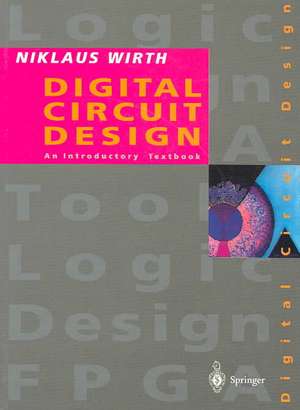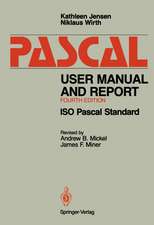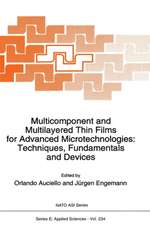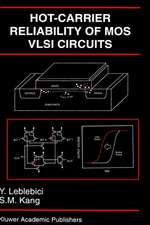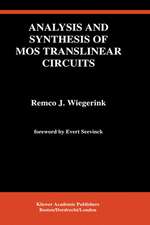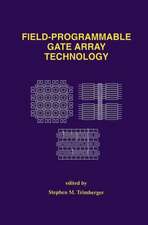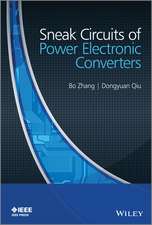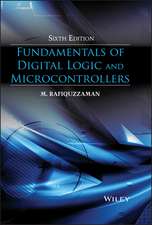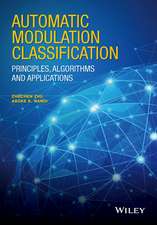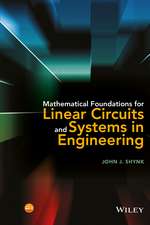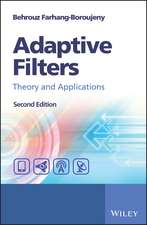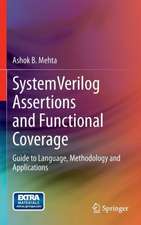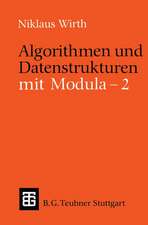Digital Circuit Design for Computer Science Students: An Introductory Textbook
Autor Niklaus Wirthen Limba Engleză Paperback – 23 aug 1995
Preț: 585.90 lei
Preț vechi: 689.29 lei
-15% Nou
Puncte Express: 879
Preț estimativ în valută:
112.13€ • 116.63$ • 92.57£
112.13€ • 116.63$ • 92.57£
Carte tipărită la comandă
Livrare economică 15-29 aprilie
Preluare comenzi: 021 569.72.76
Specificații
ISBN-13: 9783540585770
ISBN-10: 354058577X
Pagini: 224
Ilustrații: XIII, 204 p. With 1 Falttafel.
Dimensiuni: 155 x 235 x 12 mm
Greutate: 0.47 kg
Ediția:Softcover reprint of the original 1st ed. 1995
Editura: Springer Berlin, Heidelberg
Colecția Springer
Locul publicării:Berlin, Heidelberg, Germany
ISBN-10: 354058577X
Pagini: 224
Ilustrații: XIII, 204 p. With 1 Falttafel.
Dimensiuni: 155 x 235 x 12 mm
Greutate: 0.47 kg
Ediția:Softcover reprint of the original 1st ed. 1995
Editura: Springer Berlin, Heidelberg
Colecția Springer
Locul publicării:Berlin, Heidelberg, Germany
Public țintă
GraduateCuprins
1. Transistors and Gates.- 1.1. Gates with Bipolar Transistors.- 1.2. Gates with Field Effect Transistors.- 1.3. Electrical Characteristics of Gates.- 2. Combinational Circuits.- 2.1. Boolean Algebra.- 2.2. Graphical Notations.- 2.3. Circuit Simplification.- 2.4. The Decoder or Demultiplexer.- 2.5. The Multiplexer.- 2.6. The Adder.- 2.7. The Adder with Fast Carry Generation.- 2.8. The Multiplier.- 2.9. The Read-Only Memory (ROM).- 2.10. The Combinational PLD.- 2.11. The Programmable Gate Array.- 2.12. Dynamic Behaviour of Combinational Circuits.- 3. Latches and Registers.- 3.1. The SR-Latch.- 3.2. The D-Latch.- 3.3. The D-Register.- 3.4. The JK Register.- 4. Synchronous, Sequential Circuits.- 4.1. The State Machine.- 4.2. The Shift Register.- 4.3. The Synchronous Binary Counter.- 4.4. A Design Methodology for State Machines.- 4.5. The PLD and the FPGA with Registers.- 4.6. Timing and Practical Considerations.- 5. Bus Systems.- 5.1. The Concept of a Bus.- 5.2. The Open-Collector Circuit.- 5.3. The Tri-state Gate.- 6. Memories.- 6.1. Static Memories.- 6.2. Dynamic Memories.- 6.3. Dual-Port Memories.- 7. Formal Description of Synchronous Circuits.- 7.1. Motivation.- 7.2. Lola: A Formal Notation for Synchronous Circuits.- 7.3. Examples of Textual Circuit Descriptions.- 8. Design of an Elementary Computer.- 8.1. The Design of von Neumann.- 8.2. Choice of a Specific Architecture.- 8.3. The Arithmetic-Logic Unit (ALU).- 8.4. The Control Unit.- 8.5. Phase Control and Instruction Decoding.- 8.6. An Implementation Using Standard Parts.- 8.7. Interrupts.- 9. Multiplication and Division.- 9.1. Multiplication of Natural Numbers.- 9.2. Division of Natural Numbers.- 9.3. Extending the ALU by a Multiplier-Quotient Register.- 10. Design of a Computer Based on a Microprocessor.- 11. Interfaces Between Asynchronous Units.- 11.1. The Handshake Protocol.- 11.2. Processor-Bus Interfaces.- 11.3. Adding an I/O Interface to the Hercules Computer.- 12. Serial Data Transmission.- 12.1. Introduction.- 12.2. Synchronous Transmission.- 12.3. Asynchronous Transmission.- 12.4. A Buffered Transmitter and Receiver.- Appendix 1: Implementations Based on the Programmable Gate Array AT6002.- 1. The Laboratory.- 2. The Structure of the Gate Array.- 3. The FPGA Extension Board.- 4. A Set of Design Examples.- Appendix 2: Syntax of Lola.- Selected Design Exercises.
Textul de pe ultima copertă
This textbook provides a thorough and systematic introduction to designing digital circuits. The author is the leading programming language designer of our time and in this book, based on a course for 2nd-year students at the Federal Institute of Technology (ETH) in Zurich, he aims to close the gap between hardware and software design. He encourages the student to put the theory to work in exercises that include lab work culminating in the design of a simple yet complete computer. The lab work is based on a workstation equipped with a single field programmable gate array chip and software tools for entering, editing, and analyzing designs. This text is a modern introduction to designing circuits using state-of-the-art technology and a concise, easy to master hardware description language (Lola)
